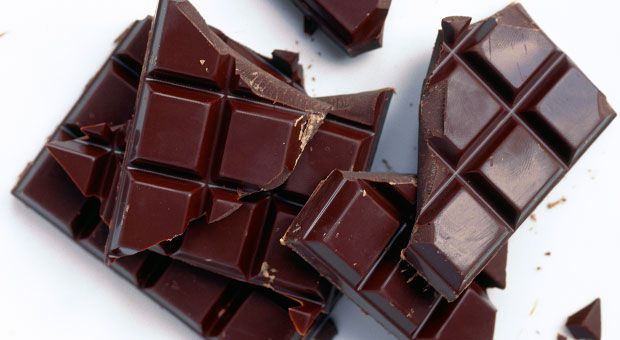We've been hearing about a lot about lead lately. Back in December, there was the horrifying news of the lead poisoning crisis in Flint, Michigan. Then, in January, the FDA warned consumers about a cosmetic clay product with elevated levels of the heavy metal. And last week, a consumer advocacy group released an updated survey which revealed many popular chocolate brands contain levels of lead that exceed the safety threshold established by California law.
The group, called As You Sow, had an independent lab test 50 samples of cocoa products. They found that 35 contained lead and/or cadmium, another toxic metal that's been linked to fertility problems and increased risk of breast cancer and liver disease.
As You Sow has filed notices with 18 manufacturers—including company's like Hershey's, Whole Foods, Godiva, Ghiradelli, and Trader Joe's—for failing to provide a warning to consumers required by the state of California.
“Lead and cadmium accumulate in the body, so avoiding exposure is important, especially for children," As You Sow president Danielle Fugere said in a news release. “Our goal is to work with chocolate manufacturers to find ways to avoid these metals in their products.”
RELATED: The Lead Poisoning Symptoms That Everyone Should Know
How does lead get in chocolate, anyway?
It's not entirely clear. Many manufacturers say that lead occurs naturally in certain foods.
The National Confectioners Association told CNN that "[s]ome minerals—like cadmium and lead—are found naturally in many foods, including seafood, peanuts, potatoes, grains, leafy vegetables and—sometimes—cocoa beans. Cocoa-based foods are consumed in small amounts and are not a major source of these minerals in the diet."
It's also possible that chocolate absorbs the metal during manufacturing or shipping. In a 2005 study published in Environmental Health Perspectives, researchers found that manufactured cocoa and chocolate products contained higher levels of lead than raw cocoa beans.
RELATED: 19 Medical Tests That Everyone Needs
How much lead in chocolate is OK?
This is another gray area. As CNN points out, regulations on toxic chemicals in food are more strict in California than in the rest of the country. They're also more strict than federal guidelines.
For example, California says that both kids and adults shouldn't have more than 5 micrograms of lead a day from any food source. But the FDA says small children can safely consume up to 6 micrograms a day from candy alone. The limit for adults is higher.
So while As You Sow is claiming the lead and cadmium levels in popular chocolate products exceed California's limits, they could still be in line with FDA guidelines. The FDA responded to the group's initial statement, saying the agency "monitors lead levels in the U.S. food supply."
And six of the 12 manufacturers named in the updated survey responded to CNN's request for comments, insisting their products are safe. "People have been eating cocoa and chocolate safely for centuries," Hershey's statement read. "Consumers can rest assured that our … industry adheres to all government regulations."
